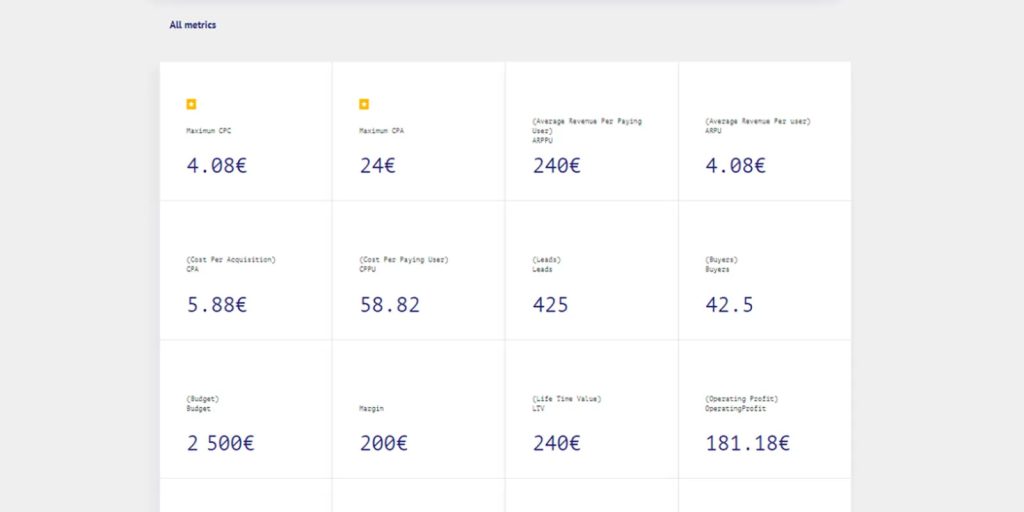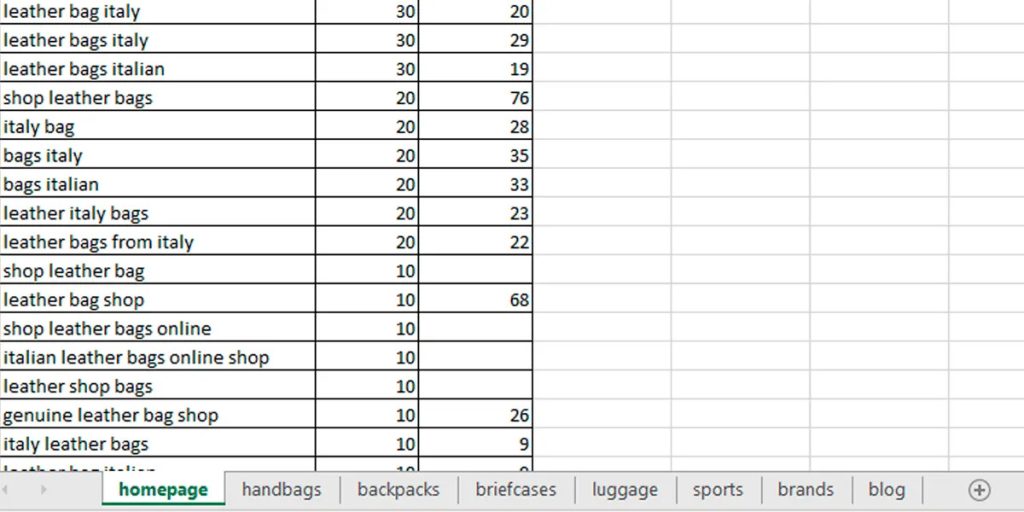Home | Case studies | Kesandi
Case Study: “Kesandi” Online Leather Bag Store from Europe
- Profitable online store in 4.5 months
About the customer
Kesandi

Kesandi is a multi-brand online store for European-made leather goods. The company will enter the American market in 2022. The collection of the online store includes more than 500 models of bags, briefcases, backpacks and accessories for women and men of different types of leather.
Sales market – USA, Canada
Business Tasks:
- Business creation from scratch;
- Market and competitor analysis;
- Development of a business plan and a financial model;
- Determination of the target audience;
- Providers search ;
- Development of a marketing strategy;
- Development of the e-commerce site;
- Process automation.
Steps of
work on a project
1. Choice of a product niche. Calculation of return on investment and development of a financial model.
What was done :
- Determination of the volume and dynamics of market development;
- Competitor analysis (direct and indirect competition);
- Under the guise of acquirer, we carried out an audit of websites and an analysis of the processes of competing companies;
- Development of a business plan and a financial model;
- Calculation of customer acquisition cost and return on investment.
As agreed with the client, we analyzed several niches in terms of demand, market size, development trends and dynamics, marginality, seasonality, availability in wholesale markets. After analyzing the competitors, we finally chose the “European leather bags” product niche. Next, we determined the volume of potential sales, geography of sales, marketing costs. We took into account the percentage of refusals and returns, the cost of maintaining an online store, the salaries of specialists. We calculated the Unit Economics of the project and the potential net profit of the company. Our specialists also described the scope of work and costs of setting up a business.

2. Determination of the target audience and means of online promotion.
What was done:
- Target audience segmentation;
- Developing a marketing strategy and identifying effective channels to sell a product in the online market;
- Formation of an assortment of the e-commerce site.
We identified the target audience – people interested in leather bags and accessories –, established several segments based on age and gender, marital status, level of education, purchasing power , income, etc. Next, we created the portrait of the ideal customer. After a detailed examination of the market, competitors and analysis of the target audience in the “European leather bags” niche, the most profitable online sales channels were determined. These are SEO, contextual advertising, email marketing and social media marketing on Pinterest and Instagram. Based on the analysis, an approximate assortment of the future online store and product policy of the company was made.

3. Providers search.
We analyzed each supplier according to criteria such as:
- Unit cost;
- Minimum volume of goods to be purchased;
- Delivery time and cost;
- Reputation and loyalty of suppliers;
- Availability of notifications of price changes or product updates;
- Conditions for return or exchange of defective/illiquidated products.
As Kesandi does not have a warehouse and the initial capital for business development was limited, choosing suppliers was not an easy task for our team. The search for suppliers was organized by several specialists via “offline” and “online” channels such as trade fairs, competitor sites, yellow pages and among European manufacturers of leather bags and accessories in supplier catalogs. As a result, after 2 months of research, we managed to find 25 reliable suppliers, mainly from Spain and Italy.

4. Creation of an e-commerce site
What was done :
- Semantic search;
- Keyword grouping (or topic clusters);
- Creation of the site architecture;
- Development of the “Headless” e-commerce site;
- Connection of payment systems;
- Process automation;
- Content filling;
- SEO optimization;
- Optimization of business factors;
- Optimization of external factors.
When creating the Kesandi e-commerce website, we focused on 5 key elements: clear navigation, effective information architecture, SEO-optimized category and product landing pages, ease of payment and security.
For the implementation of this site, we chose the modern CMS system “Headless”, primarily because of the obvious advantages over classic CMS, namely: omnichannel, centralized work with content, high security against hacking, resistance to increased loads, high loading speed and ease of maintenance.





